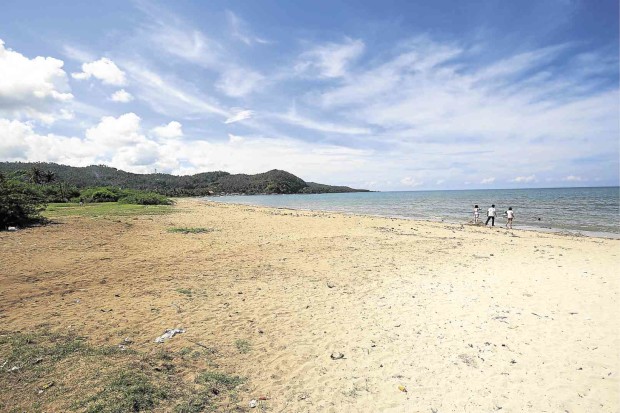
THE TAYABAS Bay shoreline is part of Quezon province’s more than 1,000-km long coastline that drug smugglers had used in the past to bring in contraband.
LUCENA CITY—Police expressed confidence they could foil the smuggling of drugs through the 1,066-kilometer coastline of Quezon province, which had been known in the past to be a drop-off point for “shabu” shipments.
“Historically, our coastlines were once the drop-off areas of big shabu shipments,” said Senior Supt. Antonio Yarra, provincial police chief.
“The syndicates could try (smuggling drugs) again but we’re ready to foil them,” Yarra said.
Yarra said he ordered police station chiefs along coastal areas to regularly monitor the coastline to prevent drug smuggling.
Thirty-four of Quezon’s 42 towns are coastal—17 along Lamon Bay in the Pacific Ocean, 12 off the Tayabas Bay facing the China Sea and five along the Ragay Gulf.
In August 2000, government forces arrested six Chinese nationals who were smuggling 365 kilograms of shabu, worth P730 million, in the Tayabas Bay coastline in Sariaya town.
Drug ambulance
The following year, policemen and soldiers arrested Panukulan town Mayor Ronnie Mitra and his security aides at a police checkpoint in Real Highway.
The group was caught while transporting some 503 kg of shabu, worth over P1 billion and placed in several sacks, to Metro Manila using the municipality’s ambulance. The island town of Panukulan lies on the coast near the Pacific Ocean.
In 2008, authorities raided a shabu laboratory in the coastal town of Real in northern Quezon and seized some 70 kg of shabu with an estimated street value of P300 million.
Before the intensified drug war as ordered by President Duterte, shabu supplies in Quezon came from Manila, Laguna and Cavite.
According to Inquirer sources among drug pushers, no fresh supply of shabu has come in due to the intensified anti-illegal drug operations by the authorities.
Quezon Gov. David Suarez gave his all-out support to the police campaign against illegal drugs.
Last month, Suarez created the Provincial Anti-Drug Abuse Council (Padac) to address the drug problem in the province.
“The increasing use of illegal drugs has considerably contributed to various crimes, thus, this problem has to be addressed much more effectively,” Suarez said in an executive order that created Padac.
Frontline
Last year, Suarez also created the Quezon Provincial Anti-Organized Crime Group Task Force, composed of police, local government officials and concerned government agencies to add more teeth to the anti-illegal drug drive in the province.
Police also strengthened the Barangay Anti-Drug Abuse Council (Badac) to serve as a frontline force in the campaign against illegal drugs.
In Central Luzon, many Badacs had been inactive until Mr. Duterte declared total war on drugs.
Badacs prepare drug watch lists that help police in surveillance operations.
Until recently, roughly 2,490 of 3,102 villages in seven Central Luzon provinces did not have active councils as required by law.
This could explain why the drug problem in the region have worsened in the past years, said Glen Guillermo, information officer of the Philippine Drug Enforcement Agency (PDEA).
Guillermo said 1,458 villages had been classified as drug affected. He said 40,000 drug users and pushers had surrendered as of Aug. 4.
PDEA said the lists are being reevaluated because the number of people who surrendered was more than that of suspects on these lists. With a report by Gabriel Cardinoza, Inquirer Northern Luzon